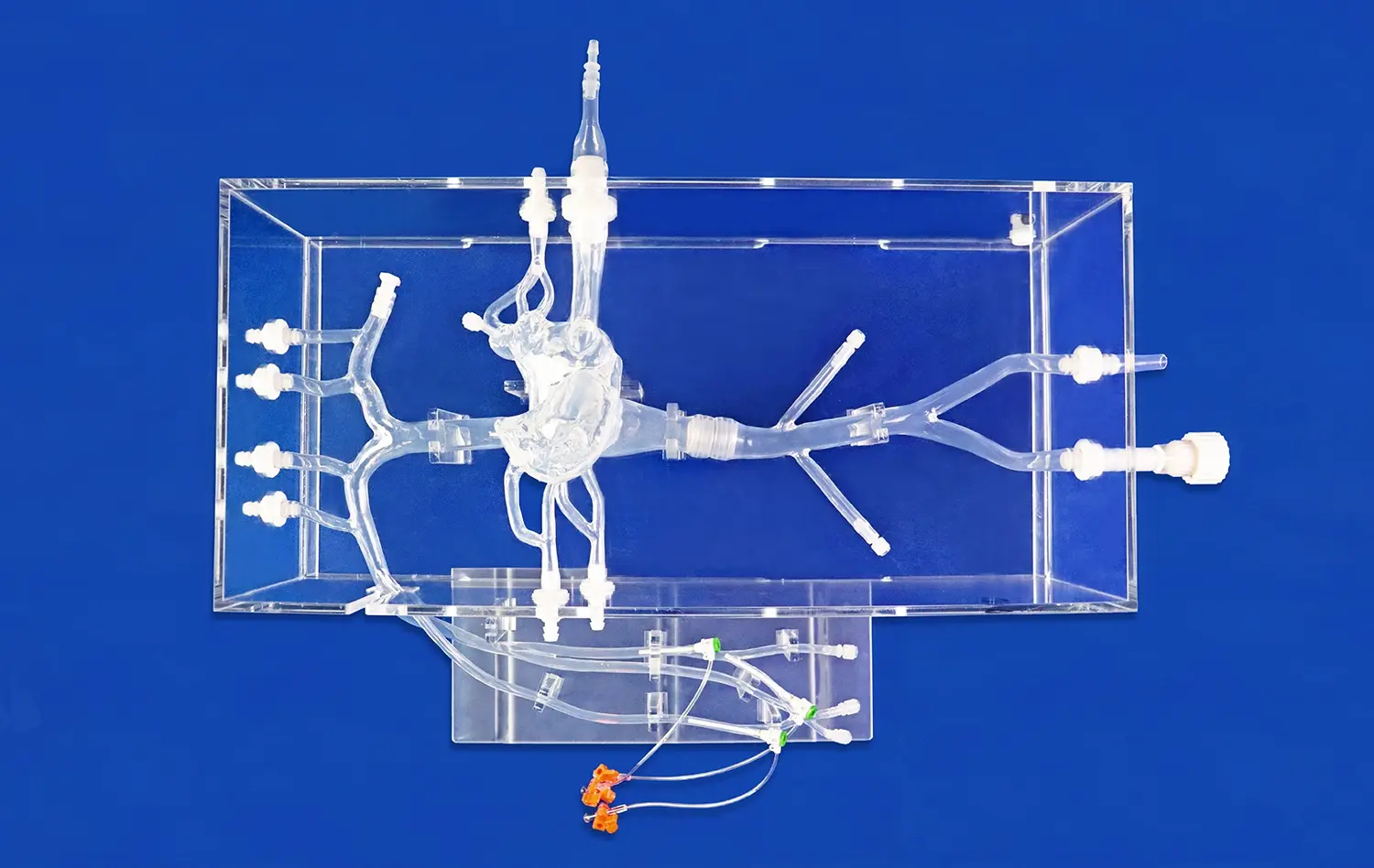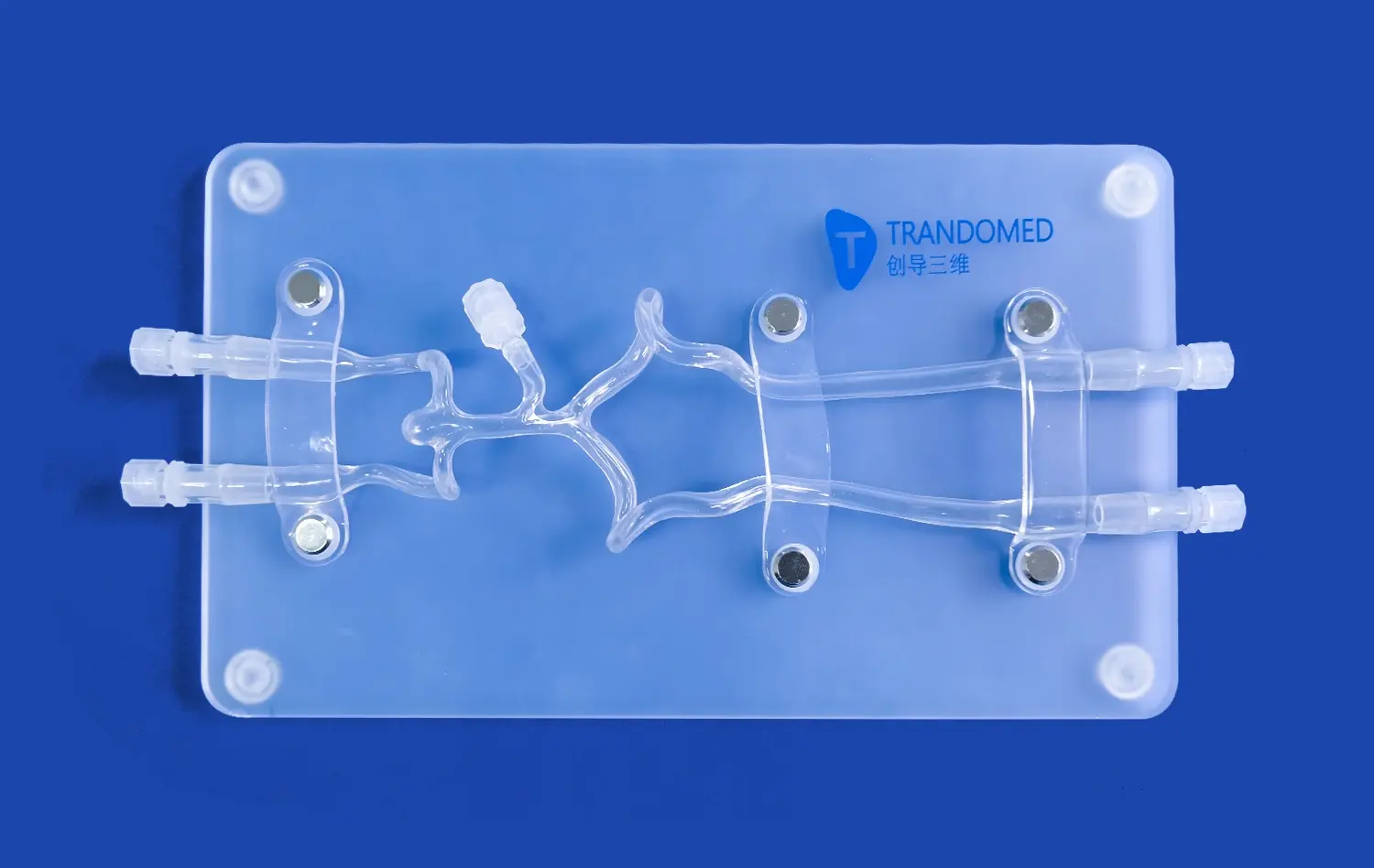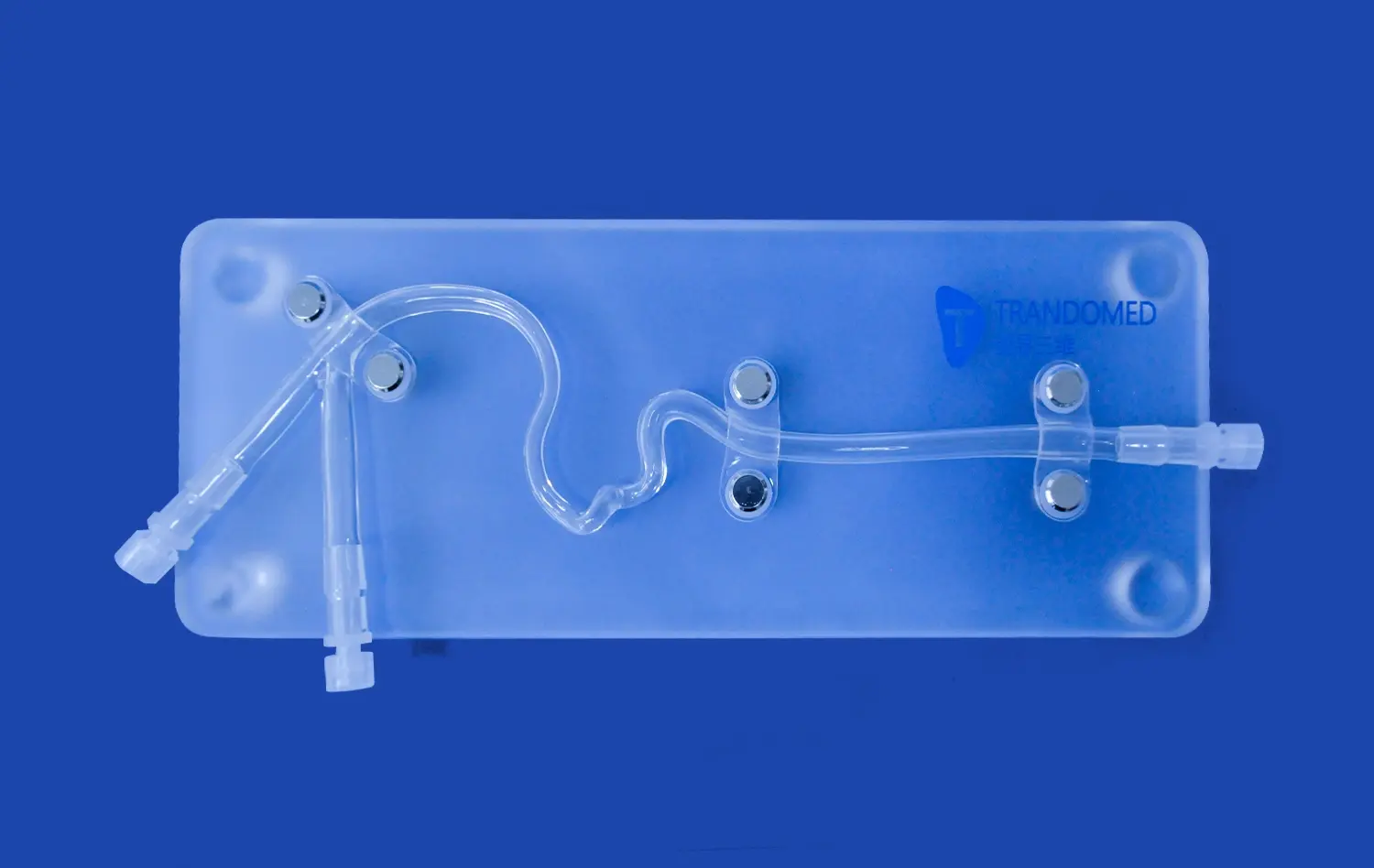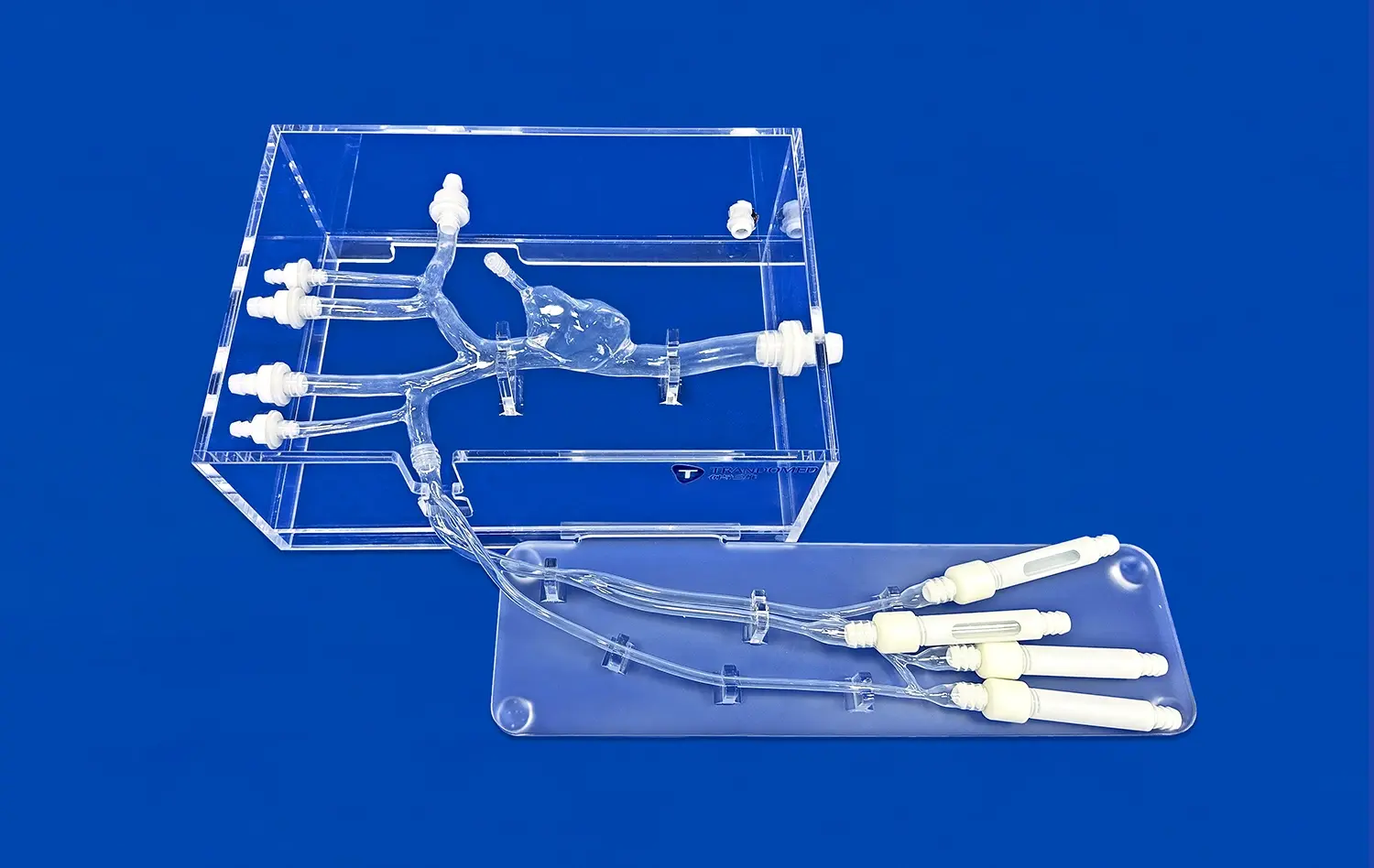How Aneurysm Models Support the Development of Advanced Neurovascular Devices?
2025-07-17 09:00:00
Aneurysm models play a pivotal role in advancing the development of cutting-edge neurovascular devices. These sophisticated replicas of cerebral aneurysms provide researchers and medical device manufacturers with invaluable tools for testing, refining, and validating new technologies. By simulating the complex anatomical structures and hemodynamic conditions of real aneurysms, these models enable engineers to iteratively design and improve devices such as stents, coils, and flow diverters. The use of aneurysm simulators accelerates the product development cycle, enhances the safety and efficacy of neurovascular interventions, and ultimately contributes to better patient outcomes. From facilitating precise device deployment to uncovering potential failure modes, aneurysm models serve as indispensable assets in the quest for more effective treatments for cerebrovascular disorders.
Accelerating the Iterative Design Process
Rapid Prototyping and Testing
Aneurysm models serve as powerful tools in expediting the iterative design process for neurovascular devices. By utilizing these accurate representations of cerebral vascular structures, engineers can rapidly prototype and test new device concepts without the need for extensive animal studies or human trials in the early stages of development. This accelerated approach allows for quick identification of design flaws and areas for improvement, significantly reducing the time and resources required to bring innovative treatments to market.
The use of 3D-printed aneurysm simulators, in particular, has revolutionized the design iteration process. These models can be quickly produced with varying anatomical features, enabling developers to assess device performance across a wide range of aneurysm morphologies. This versatility allows for comprehensive testing and refinement of devices, ensuring they can effectively treat diverse patient populations.
Optimizing Device Geometry and Materials
Aneurysm models provide an ideal platform for optimizing the geometry and materials used in neurovascular devices. By testing different device configurations within these realistic simulations, engineers can fine-tune crucial parameters such as strut thickness, pore size, and overall device shape. This optimization process is essential for achieving the delicate balance between flexibility, radial force, and flow-diverting capabilities required for effective aneurysm treatment.
Moreover, these models allow for the evaluation of various biomaterials and coatings used in device construction. Researchers can assess the interaction between device materials and simulated vessel walls, helping to minimize the risk of complications such as thrombosis or vessel perforation. The insights gained from these studies directly inform material selection and surface modification strategies, leading to the development of more biocompatible and effective neurovascular interventions.
Evaluating Device Deployment Mechanics
Assessing Navigability and Trackability
One of the critical aspects of neurovascular device development is ensuring smooth and precise navigation through the intricate cerebral vasculature. Aneurysm models play a crucial role in evaluating the navigability and trackability of devices such as stents, flow diverters, and coils. By replicating the tortuous paths and varying diameters of cerebral arteries, these models allow engineers to assess how well devices can be maneuvered through complex vascular structures.
During simulated deployments, researchers can identify potential issues such as device snagging, unintended unraveling, or difficulties in accessing the aneurysm sac. This valuable feedback guides the refinement of device profiles, flexibility, and delivery systems, ultimately leading to improved ease of use for interventionalists and reduced procedural risks for patients.
Analyzing Device Expansion and Conformability
The effectiveness of neurovascular devices often hinges on their ability to expand properly and conform to the unique anatomy of each aneurysm. Aneurysm models provide an ideal testing ground for analyzing these crucial deployment characteristics. By using transparent or radiopaque models, engineers can visually observe and quantitatively measure how devices expand and adapt to various aneurysm geometries.
These simulations help in optimizing device designs to achieve optimal wall apposition, minimize gaps between the device and vessel wall, and ensure complete aneurysm neck coverage. The insights gained from these studies inform design modifications that enhance the devices' ability to effectively seal off aneurysms from blood flow, promoting thrombosis and reducing the risk of rupture or recanalization.
Investigating Failure Modes and Device Safety
Simulating Worst-Case Scenarios
Aneurysm models serve as invaluable tools for investigating potential failure modes and assessing the safety of neurovascular devices under extreme conditions. By creating models that represent challenging anatomical variations or simulating worst-case deployment scenarios, researchers can push devices to their limits and identify potential weaknesses or failure points.
These simulations may include scenarios such as oversized or undersized device deployment, partial detachment, or interaction with calcified vessel walls. By subjecting devices to these rigorous tests, engineers can proactively address potential risks and develop robust safety features. This proactive approach to failure mode analysis contributes significantly to enhancing the overall safety profile of neurovascular interventions.
Evaluating Long-Term Device Performance
While acute performance is crucial, understanding the long-term behavior of neurovascular devices is equally important for ensuring patient safety and treatment efficacy. Aneurysm models facilitate the evaluation of device performance over extended periods through accelerated aging studies and simulated physiological conditions.
By subjecting devices to pulsatile flow, varying pressure conditions, and simulated tissue ingrowth, researchers can assess factors such as device migration, material degradation, and the potential for delayed complications. These long-term studies provide valuable insights into the durability and sustained effectiveness of neurovascular interventions, guiding improvements in device design and materials to ensure optimal outcomes for patients over time.
Conclusion
Aneurysm models have emerged as indispensable tools in the development of advanced neurovascular devices. By facilitating rapid design iterations, enabling precise evaluation of deployment mechanics, and supporting rigorous safety assessments, these models significantly accelerate the innovation process. The insights gained from aneurysm simulations directly translate into improved device designs, enhanced procedural techniques, and ultimately, better patient outcomes. As the field of neurovascular intervention continues to evolve, the role of aneurysm models in driving progress and ensuring the safety and efficacy of new treatments remains paramount.
Contact Us
To learn more about our advanced 3D-printed aneurysm models and how they can support your neurovascular device development efforts, please contact us at jackson.chen@trandomed.com. Our team of experts is ready to collaborate with you in pushing the boundaries of neurovascular innovation and improving patient care worldwide.
References
Chueh, J. Y., Wakhloo, A. K., & Gounis, M. J. (2019). Neurovascular modeling: small-batch manufacturing of silicone vascular replicas. American Journal of Neuroradiology, 40(7), 1121-1126.
Kaneko, N., Ullman, H., Ali, F., Berg, P., Ooi, Y. C., Tateshima, S., ... & Watanabe, M. (2021). In vitro evaluation of flow diverters in an anatomically realistic intracranial aneurysm model. Journal of Neurointerventional Surgery, 13(5), 451-456.
Lovett, E. C., Fargen, K. M., Gade, A. R., Becske, T., Siddiqui, A. H., & Koltz, M. T. (2020). Intracranial aneurysm models for in vitro experiments and in vivo trials: a systematic review. World Neurosurgery, 137, 504-513.
Mokin, M., Wakhloo, A. K., Ding, Y. H., Kan, P., & Puri, A. S. (2018). Aneurysm models for assessing and advancing flow diverter technology. Expert Review of Medical Devices, 15(6), 411-421.
Ruedinger, K. L., Tanweer, O., Tawk, R. G., & Kallmes, D. F. (2021). Patient-specific 3D-printed brain aneurysm models for research and surgical planning: a systematic review. Journal of Neurosurgical Sciences, 65(3), 228-236.
Suzuki, T., Takao, H., Suzuki, T., Kambayashi, Y., Watanabe, M., Sakamoto, H., ... & Murayama, Y. (2020). Determining the optimal width and length of flow diverter stents for aneurysm treatment: an in vitro study using 3D printed models. Journal of NeuroInterventional Surgery, 12(6), 603-607.

_1736214519364.webp)
_1734504197376.webp)











